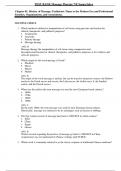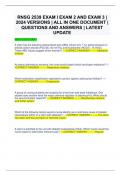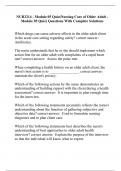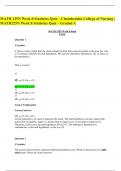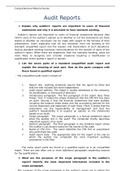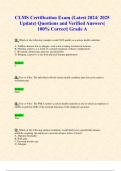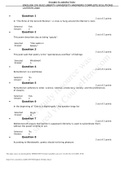Examen
Test Bank - Massage Therapy-Principles and Practice, 7th Edition (Salvo, 2023), Chapter 1-30 | All Chapters
- Cours
- Établissement
- Book
Test Bank for Massage Therapy-Principles and Practice, 7th Edition (Salvo, 2023), Chapter 1-30 | All Chapters
[Montrer plus]
